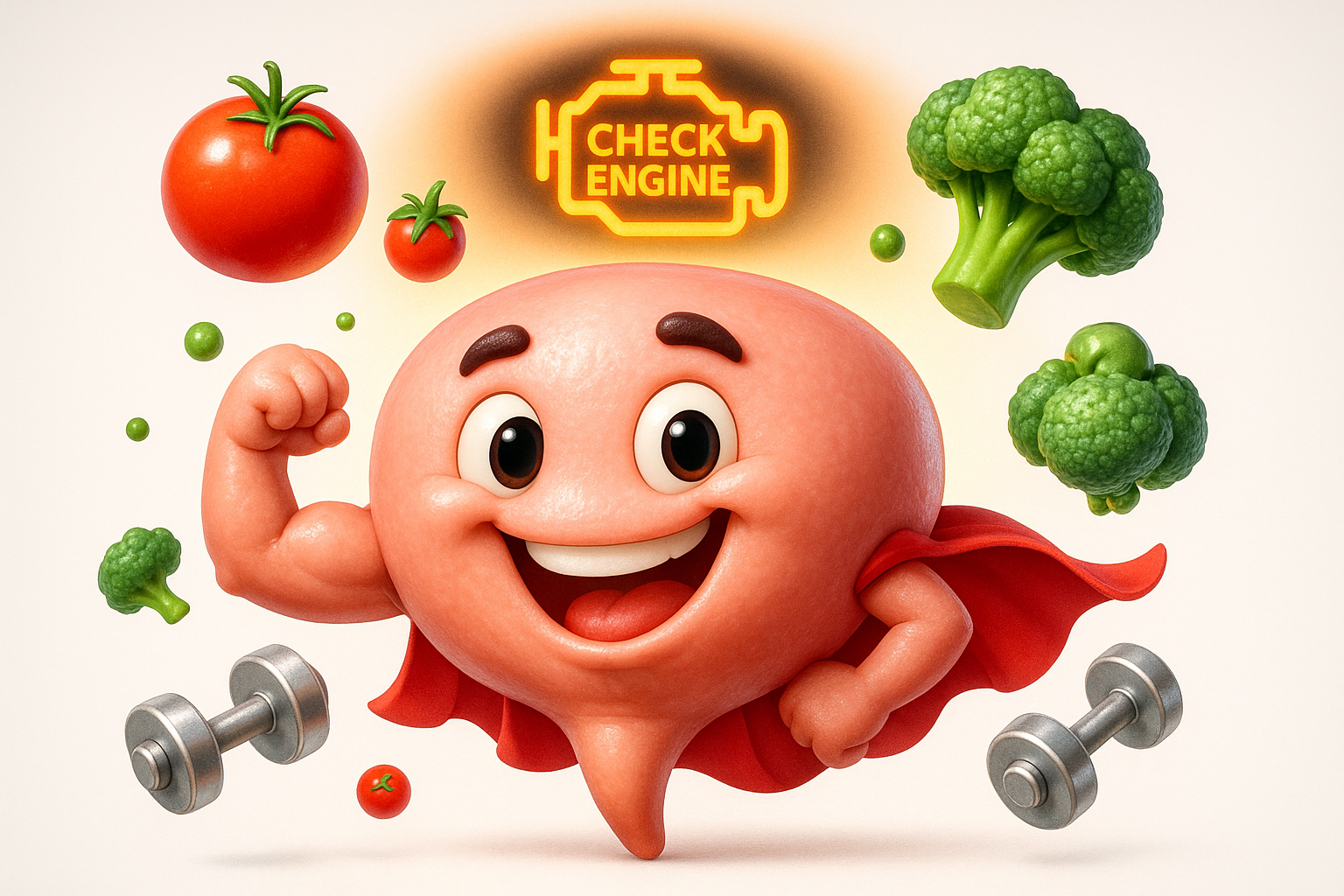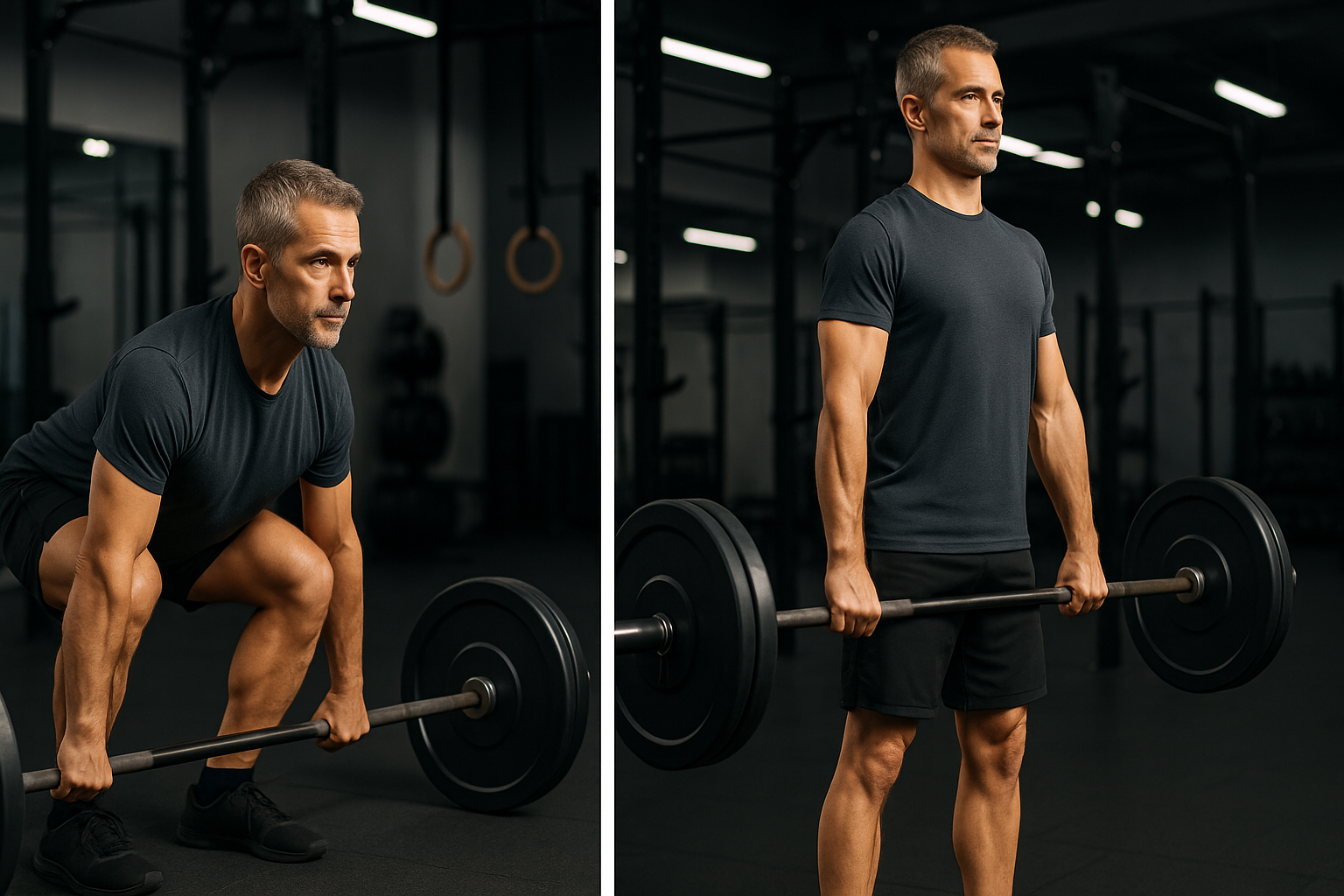A Complete Slider Workout for Men Over 40: Build Strength, Not Pain
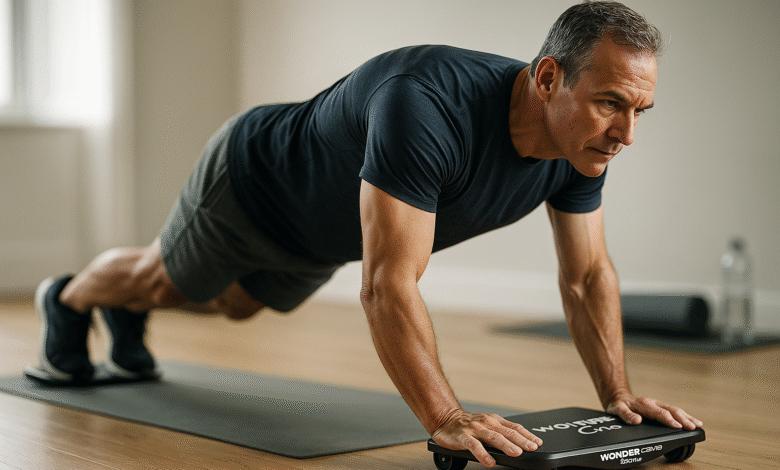
Table of Contents
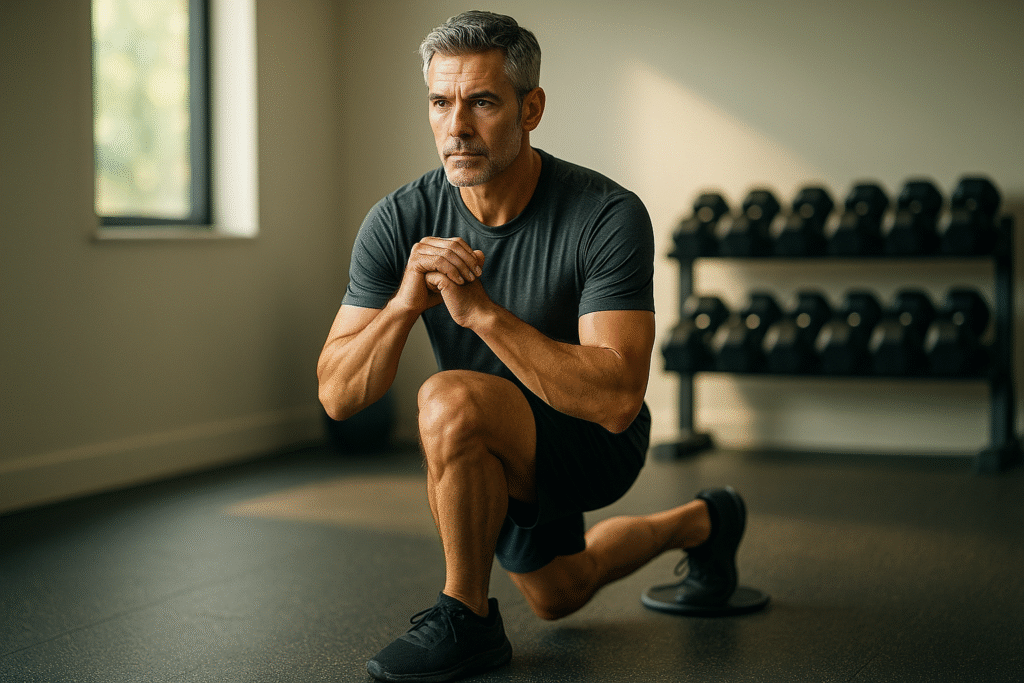
Slider Exercises For Men Over 40
Do you remember playing a pickup basketball game on Saturday and feeling fine on Monday? For many of us over 40, that has changed. A high-impact workout can now leave our knees and lower back sending warning signals for days.
The fitness industry often promotes explosive, high-impact movements. My experience, supported by sports medicine research, shows the smartest thing we can do is work smarter, not harder. The goal shifts from peak performance to durable performance. We need workouts that build practical strength, stabilize our core to prevent injury, and respect our joints. This is where a simple and inexpensive tool comes into play: exercise sliders.
This guide gives you a complete, joint-friendly, full-body workout for the body of a man over 40. Let’s break down why this low-impact method works so well for building a resilient core and how to perform each movement correctly for the best results without the risk.
Why Sliders Are a Smart Choice After 40
Before we get to the workout, you should understand why this simple tool works. It is not just another fitness gadget; it is a good choice for building long-term, resilient strength.
Low-Impact, High-Tension Exercise
Think about a standard lunge. At the bottom and top of the move, muscle tension can decrease. With a slider, your muscles are under a constant load through the whole motion. Removing the impact and forcing a smooth, controlled slide creates a unique form of resistance. This “time under tension” is a powerful way to build muscle, but it happens without jarring your knees, hips, and ankles. Health groups like the Mayo Clinic say low-impact exercise is a key way to protect joints as we age. This allows us to train consistently without being sidelined by pain.
A Stronger Core Means a Healthier Back
Many men over 40 know what it is like to have a “tweaked” lower back. Sliders are one of the best tools for forging a truly strong, stable core. Almost every slider exercise makes you engage your deep core muscles to control the unsteady sliding motion. This is not about getting a six-pack. It is about building a natural corset of muscle that supports and protects your spine in daily life.
Expert Point: Research from the Journal of Orthopaedic & Sports Physical Therapy shows that exercises challenging core stability work well to reduce long-term lower back pain by improving motor control of the lumbar spine.
Practical Fitness for Real Life
Practical fitness means training for life, not just for the gym. It is about being able to lift a heavy suitcase into an overhead bin or play with your kids without getting hurt. Slider exercises copy the demands of real-world movement. They require balance, stability, and coordination between your upper and lower body. This builds a type of integrated strength that makes everything you do outside the gym feel easier and safer.
The 5 Main Slider Exercises for a Full-Body Workout
Here are the five key movements for our full-body, joint-friendly workout. You should focus on perfect form over speed. The magic is in the control.
1. The Slider Reverse Lunge
This move builds powerful glutes and quads and improves the hip mobility many of us lose from sitting. It is much kinder on the front knee than a traditional walking lunge.
- Setup: Stand with feet hip-width apart. Place the ball of your right foot on a slider.
- Action: Keep your weight on your stationary left heel. Slowly slide your right foot backward until your left thigh is almost parallel to the floor. Your chest should stay up.
- Return: Push through your left heel and squeeze your glutes to pull the slider back to the start. Do all reps on one side before you switch.
2. The Slider Hamstring Curl
This is a key exercise for building the hamstrings that protect your knees and lower back. It is a great substitute for machine-based curls.
- Setup: Lie on your back with your knees bent and your heels on two sliders. Your arms should be flat on the floor for support. Lift your hips off the ground to form a straight line from your shoulders to your knees.
- Action: Keep your hips up. Slowly slide your heels away from you until your legs are almost straight.
- Return: Squeeze your hamstrings and glutes to pull your heels back toward your body and return to the starting position.
Pro Tip: You should focus on the eccentric (lengthening) part of the movement. For the hamstring curl, take three full seconds to slide your heels away from you. This is how you build real strength and control.
3. The Slider Body Saw
This is a plank with more challenge. It tests your entire core, shoulders, and even your lats in a way a static hold cannot.
- Setup: Get into a forearm plank position with your toes on two sliders. Your body should be a straight, stiff line from head to heels.
- Action: Use your shoulders and lats to press your body backward, sliding your feet a few inches.
- Return: Pull with your core and shoulders to return to the starting position. The movement should be small and very controlled.
Common Mistake: Do not let your hips sag. The goal is not range of motion; it is keeping a rock-solid, straight line from your head to your heels. If you feel this in your lower back, you have gone too far. Squeeze your glutes and brace your abs.
4. The Slider Pike
This is an advanced move that targets the lower abdominals. If it is too hard at first, you can start with a Slider Knee Tuck. Just pull your knees toward your chest instead of lifting your hips.
- Setup: Start in a high plank (push-up) position with your toes on the sliders.
- Action: Keep your legs straight. Use your lower abs to pull your feet toward your hands. Lift your hips high into the air into a “pike” or inverted V shape.
- Return: Slowly and with control, slide your feet back to the high plank position.
5. The Slider Push-Up with Reach
This version adds a big core stability challenge to the classic push-up. It forces your obliques and serratus anterior to work extra hard.
- Setup: Get into a high plank position with one hand on a slider.
- Action: As you lower your body into a push-up, slide the hand on the slider forward at the same time.
- Return: As you press back up, pull the slider back to the starting position. You can switch hands with each rep or do all reps on one side before switching.
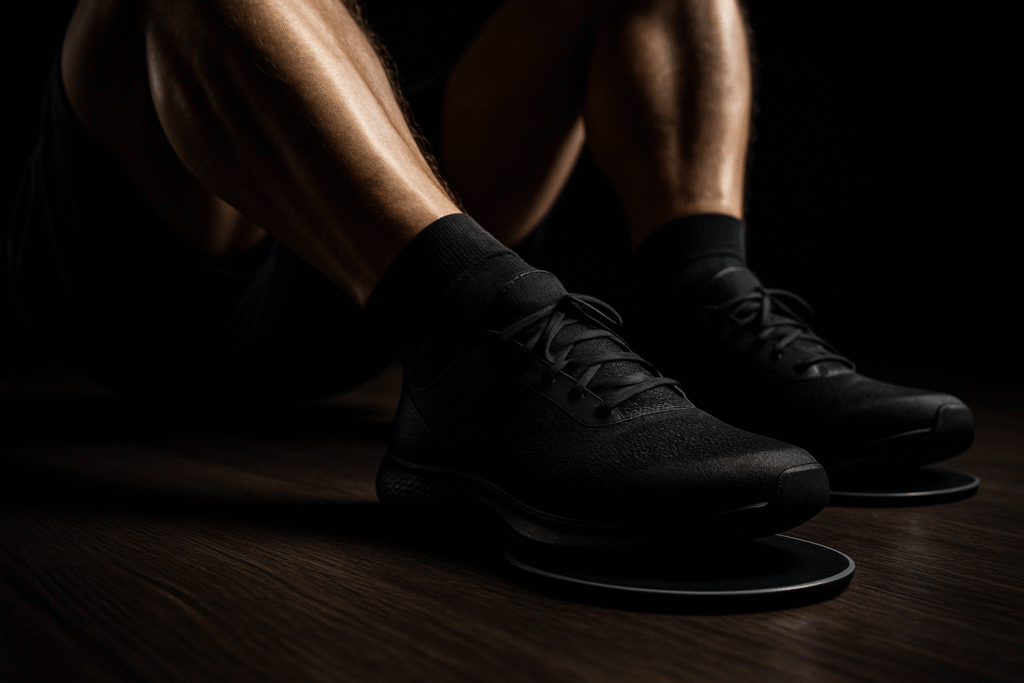
Your Workout Plan
Knowing the moves is not enough without a plan. Here is a simple program you can use 2-3 times per week on days you do not do other training.
The Warm-Up
First, take 5 minutes for a dynamic warm-up. You should focus on movements like leg swings, arm circles, cat-cow stretches, and bodyweight squats to get your joints and muscles ready.
The Workout Program
You should perform the following exercises as a circuit. Do all reps of one exercise, rest for the time shown, then move to the next. After you finish all five exercises, that is one round. Rest for 90-120 seconds and repeat for a total of 3 rounds.
| Exercise | Sets | Reps Per Side (if applicable) | Rest Between Sets | Focus Cue |
| Slider Reverse Lunge | 3 | 10 | 60 seconds | Keep your front knee behind your toe; chest up. |
| Slider Hamstring Curl | 3 | 12 | 60 seconds | Lift your hips high; control the slide out. |
| Slider Body Saw | 3 | 10 (forward/back) | 60 seconds | Squeeze glutes and abs; no hip sag. |
| Slider Pike | 3 | 10 | 60 seconds | Pull with your lower abs, not your hip flexors. |
| Slider Push-Up/Reach | 3 | 8 | 90 seconds | Try not to rotate your torso as you reach. |
Export to Sheets
Choosing Sliders
Choosing Your Equipment
You don’t need anything fancy. Most exercise sliders are dual-sided: one side is plastic for carpets, and the other is foam for hard floors. They are inexpensive and take up almost no space.
What if you do not have sliders? Here are some simple home substitutes.
- On carpet: You can use paper plates or plastic container lids.
- On hard floors: You can use a pair of small towels or even just thick socks.
The tool is less important than the controlled movement.
For those ready to get a dedicated tool, the WONDER CORE Slide Fit is a great option. Unlike simple sliders, its 4-wheel board design and automatic rebound feature offer a smoother, more controlled motion for every exercise. This is a big plus for protecting your joints and getting the most out of each repetition. It combines the benefits of a slider and an ab roller into one piece of equipment.
Disclaimer: As an Amazon Associate, this website may earn from qualifying purchases. This means if you click on a product link and make a purchase, we may receive a small commission at no extra cost to you. We only recommend products we believe in and that match our goal of providing helpful advice.
The tool is less important than the controlled movement.
Final Thoughts
As we get older, our approach to fitness has to change. It is no longer about chasing personal records if it hurts our bodies. It is about building a strong, capable, and pain-free body that lets us live the life we want for years.
Slider exercises are a perfect tool for this. They are low-impact, great for building core strength, and can be used for a full-body workout. For a small investment of time and money, they give you a big return in practical strength and long-term joint health. You should give this workout a try and feel the difference for yourself.
Sources
- “Effect of core stability training on trunk muscle activation and lumbar lordosis in asymptomatic adults,” Journal of Back and Musculoskeletal Rehabilitation, Feb. 2021,
https://pubmed.ncbi.nlm.nih.gov/32955513/ - “Tips for joint-healthy exercise,” Mayo Clinic, Aug. 2022,
https://www.mayoclinic.org/healthy-lifestyle/fitness/in-depth/protect-your-joints/art-20047358 - “Chronic Adaptations to Eccentric Training: A Systematic Review,” Sports Medicine, Apr. 2017,
https://link.springer.com/article/10.1007/s40279-017-0738-3 - “What is Functional Fitness?,” American Council on Exercise (ACE), Jan. 2023,
https://www.acefitness.org/resources/everyone/blog/6849/what-is-functional-fitness/




